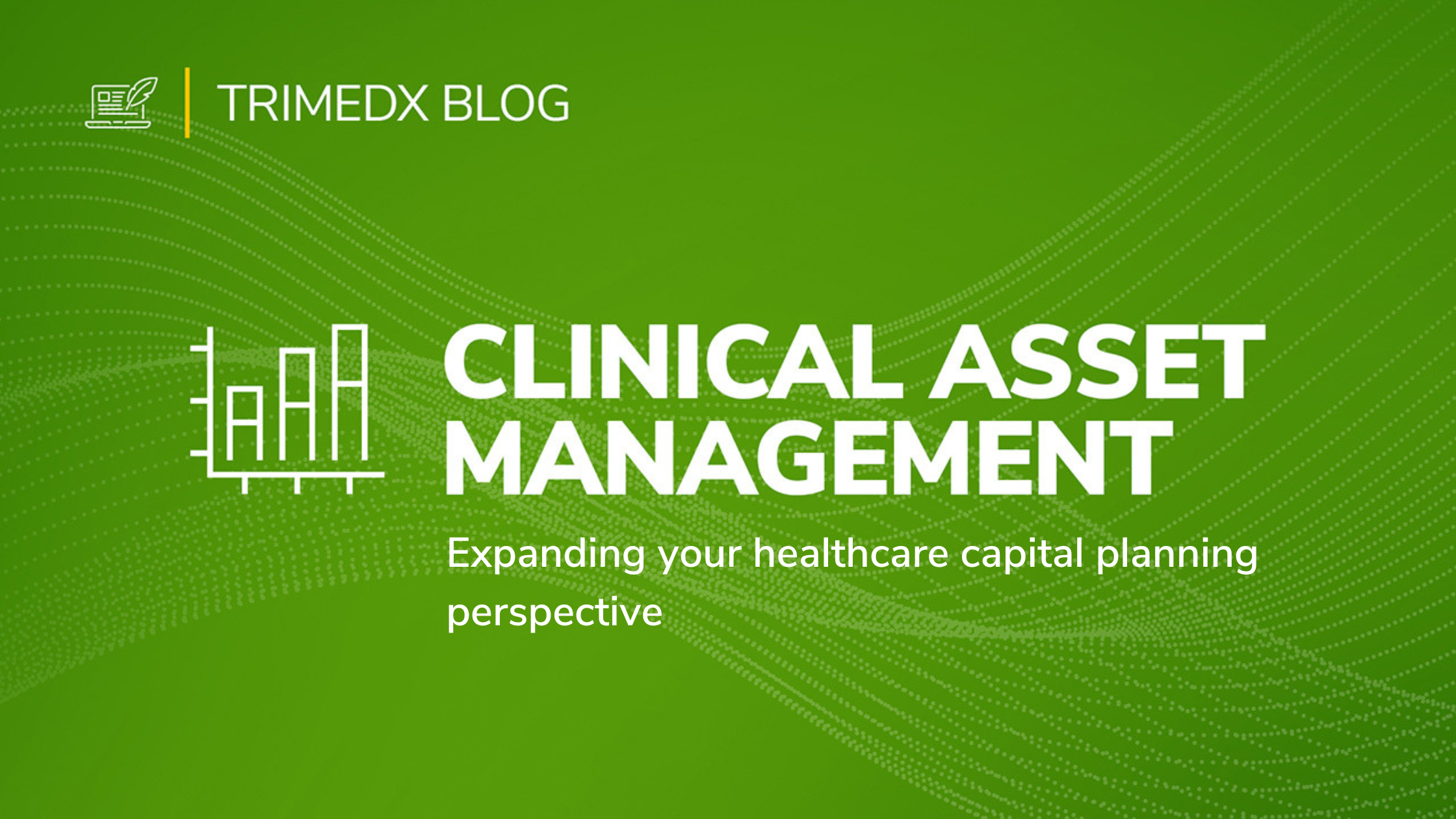Strategic asset management can incorporate more than capital budgets to impact safety, security, and efficiency in modern health care
Capital planning in health care can be an incredibly complex process. Decision makers and capital planning committees that face difficult financial constraints can often feel trapped between two seemingly contradictory priorities. Should they do everything in their power to strengthen clinical services with capital purchases in the face of historically low operating margins? Or should they reduce spending to protect the continued operation of the health system and its services, which can leave real clinical needs unaddressed?
It is more important than ever for health systems to consider device demographic data, such as performance, useful life, utilization & vulnerabilities, when planning their capital budget. As the healthcare market continues to become more technology-driven, it is essential for health systems to have a clear understanding of their device inventory, as well as their cybersecurity capabilities and procedures. This will ensure they are making the best decisions when it comes to allocating funds and resources. By incorporating medical device inventory and cybersecurity data into their capital planning processes, health systems can make informed decisions that align with their overall goals and objectives.
How can medical device inventory data better serve capital planning?
The most common objective of capital planning is deciding when to replace their assets. This choice has become particularly challenging for hospitals and other healthcare facilities as shrinking margins reduce capital resources. At the same time, healthcare facilities need to adapt to fast and continuous shifts in the needs of their patient populations. These complex factors can make capital planning feel like a no-win situation.
Understanding how medical devices function can create a more complete picture of a health system's needs and better inform capital planning processes. This data can also create opportunities for creative solutions that go beyond the binary choice of approving or rejecting purchase requests.
Reallocating medical devices within an organization can be an underrated solution for addressing unmet needs and balancing capital budgets, especially when it comes to capital-intensive technologies such as imaging equipment. For instance, maintaining an accurate inventory of various categories of imaging equipment and monitoring utilization and asset count benchmarks can help you keep track of what equipment you own and how it is being used across your sites of care. This data can be used to identify where there may be excess devices that are not being used, and potentially where you can reallocate devices from to fill growing patient demand. This approach can help avoid purchasing new equipment, while at the same time meeting real clinical needs.
Utilization data from medical devices can even reveal opportunities to reduce financial overhead in the form of surplus devices and potentially recoup financial returns from capital equipment investments. When medical devices are underutilized, they often represent a disproportionate proportion of operational expenses for maintenance and repair compared to the value the devices provide for the health system and patients. Dispositioning aging or surplus medical devices can eliminate unnecessary investments of time and budget to keep these devices operational. While healthcare facilities rarely have the time and experience to manage the removal and resale of used equipment from start to finish, they can enlist experts who simplify the process and provide access to potential buyers to maximize value.
How does cybersecurity create a more informed capital planning process?
Cyberattacks against health systems are becoming more prevalent, posing risks to clinical operations and patient safety. Developing a comprehensive cybersecurity strategy and taking proactive steps to secure devices and networks is essential for the immediate goal of protecting patients. Yet the financial impacts of a successful cyberattack breach can also threaten health systems' long-term missions to improve services and adopt new technologies. Between fines, ransoms, and lawsuits, already cash-strapped organizations lose millions yearly to these attacks.
As health systems look to maximize savings in their capital planning processes, they need to consider how existing and new medical devices will impact their risk posture. Collecting and monitoring comprehensive risk data adds an important new element to consider when prioritizing capital purchases.
Medical device software vulnerabilities are incredibly common. Yet the options to address these vulnerabilities vary from case to case. If patches are available from a manufacturer, remediating a vulnerability could be fast and straightforward. However, if a device is considered end-of-life, there may be no validated patch to use. Data from medical device inventories managed with TRIMEDX’s CYBER solution reveals that 68% of tracked vulnerabilities do not have a validated software patch. In cases like these, health systems must evaluate whether there is still a way to operate a device that matches their risk tolerance. If not, replacing that device may become more urgent for a capital planning committee to address. Combined with robust inventory data and utilization, they can also consider creative solutions like reallocating to a clinical environment where the vulnerability is less exposed to potential attackers.
•••
Health systems are looking for any opportunity to save more and spend smarter. Although the metrics involved in monitoring medical device performance and cybersecurity may often seem abstract, they can reveal deep insights into financial performance. By incorporating these factors into the healthcare capital planning process, health system leaders can do much more than increase their understanding of existing costs. They can expand the solutions that are available to drive greater success financially, operationally, and clinically.
